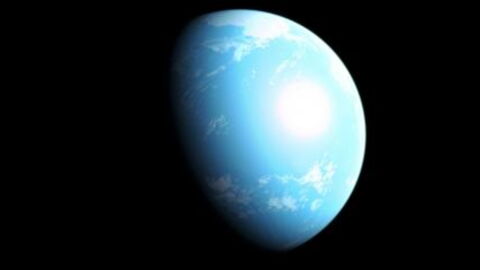It seems we’re not the only ones made from stardust, as the famous American astronomer Carl Sagan poetically, but no less scientifically put it. The sand in our deserts and on our beaches could actually have come from a lot further away than we originally thought. Or at least that’s what a study that was published in the Monthly Notices of the Royal Astronomical Society journal suggests.
Discover our latest podcast
Conducted by a team at NASA, this study revealed that the crucial ingredient in the composition of sand, silicon dioxide, was actually created by giant cosmic explosions, also known as supernovas.
From glass to the universe
To find silica, or silicon dioxide (SiO2) to be more exact, all you have to do is take a quick look around you. This chemical compound that can be found in numerous types of rocks on Earth, is also used to make cement, roads, buildings and even glass. One form of silica, quartz, is actually one of the main ingredients in the sand that makes up our beaches and deserts and is also the main source of silicon used in the majority of electronic appliances nowadays.
In total, silica makes up no less than 60% of the Earth’s crust. Its presence in the rest of the universe has been known about for a long time, but where it came from remained uncertain. To shed light on the mystery, researchers observed a pair of clouds made up of remnants of two supernovas, Cassiopeia A and G54.1+0.3. A supernova occurs when a star that is a lot bigger than the Sun runs out of the fuel that was burning in its core, and it explodes.
With the help of a spectroscopy, astronomers at NASA were able to analyse the composition of these two supernovas and identify the presence of silica within it. This research also made it possible for researchers to discover that, contrary to what they had expected, the grains of cosmic silica were not spherical in shape but elongated like rugby balls.
Significantly large quantities
Researchers still don’t know why these grains have an elongated shape or the exact mechanisms involved when they are formed. However, whilst correlating their date with that from the European Space Agency, Jeonghee Rho, the main author of the study, and his team were able to go further. They were also able to calculate the mass of silica produced at the heart of these explosions.
Their results suggest that the amount of silica created by supernovas throughout history, stars similar in size to our Sun that collapsed, would be big enough to have significantly contributed to the amount of dust found in the Universe, including the dust that came together to create our planet more than 4.5 billion years ago.
NASA's statement concludes that:
...every time we gaze through a window, walk down the sidewalk or set foot on a pebbly beach, we are interacting with a material made by exploding stars that burned billions of years ago.















